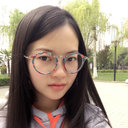Traditional Chinese medicine and the search for new antineoplastic drugs.
Atslēgvārdi
Abstrakts
The experience of traditional Chinese medicine affords a valuable approach in the search for new antineoplastic drugs as illustrated by indirubin from Dang Gui Lu Hui Wan, irisquinone from Iris lactea pallasii and Zhuling polysaccharide from Polyporus umbellata. The application of chemotaxonomic principles to related species of those plants used in folk medicine has also provided an approach which can be used successfully for the development of new drugs. The studies of Cephalotaxus hainanesis and Camptotheca accuminata provide two typical examples in this regard. One must be aware that the experience of traditional Chinese medicine cannot be used without elaborate efforts in many cases. For example, the ancient Chinese ideograph for spleen does not mean spleen in the modern sense, instead it refers to the entire gastrointestinal system. Similarly, the ancient ideograph for kidney does not mean kidney in the modern sense, and can mean the entire endocrine system. Therefore, for the reasonable utilization of traditional Chinese medicine, one must be familiar with its basic concepts and terminology. In addition, one must bear in mind that the term "tumor" in folk medicine is applied to a very wide range of pathological manifestations which sometimes have no relation to the various forms of neoplasia. It is important for drugs and treatments to be analyzed carefully in modern terms to eliminate the false and to utilize the true information. Only in such a way can the experience of traditional medicine be integrated into modern medicine and make its contribution in the advancement of health care in the world.


